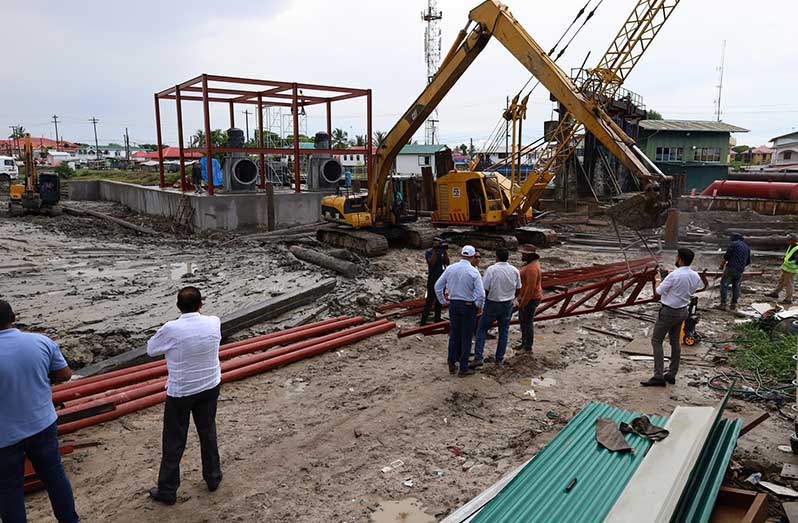IN a major boost to agricultural infrastructure, a new $650 million pump station is under construction at Canal Number One Polder on the West Bank of Demerara, promising to significantly improve drainage and irrigation (D&I) for farmers in the region.
Minister of Agriculture, Zulfikar Mustapha, recently visited the project site alongside officials from the Ministry of Agriculture, underscoring the government’s commitment to creating optimal farming conditions for local farmers and enhancing resilience against climate challenges.
The pump station, once completed, will be equipped with two powerful, mechanically driven pumping units, each capable of discharging 150 cubic feet of water per second. This increased capacity will mitigate flood risks and ensure more consistent irrigation access for hundreds of farmers in the area. With better control over water levels, farmers will be able to avoid losses tied to inadequate drainage, particularly during heavy rainfalls. This development reflects the government’s targeted investment in agricultural infrastructure, aimed at transforming local farming practices to become more resilient and productive.
Minister Mustapha highlighted the pump station as part of a broader government strategy to support farmers across Guyana.

He praised the efforts of the 250 farmers from the area who have already benefitted from drainage improvements funded by the National Drainage and Irrigation Authority (NDIA), with an additional 200 farmers set to benefit as the project progresses.
Reflecting on historical challenges, Minister Mustapha recalled that the budget for agriculture under previous leadership in 2015 had declined to $13 billion from $18.5 billion in 2014, stalling essential infrastructure projects. Since returning to office, the current administration has reversed this trend, renewing its commitment to agricultural development and restoring funding to priority areas. “These figures tell the story of who truly has the welfare of our farmers at heart,” he said. “We want Guyana to be a food-producing country, and infrastructure investments in areas like Canal Polder, Black Bush Polder, and Parika are part of our larger vision.”
The government’s push for climate-smart agriculture is central to this vision, Minister Mustapha explained. Initiatives include encouraging the construction of shade houses across the country, which allow farmers to cultivate a diverse range of high-value crops, including broccoli, cauliflower, and lettuce. This shift has already helped reduce Guyana’s reliance on imported produce, which amounted to $2.6 billion in 2021 alone. By producing these crops locally, Guyana is not only enhancing its food security but also opening up new export opportunities within the Caribbean.
For the first time in Guyana’s history, rice production is set to surpass 700,000 tonnes in 2024, with a projected output of approximately 725,000 tonnes. Minister Mustapha attributed this achievement to the dedication of farmers and the government’s support through subsidies and the provision of critical farming materials, such as fertilisers.
The Canal Number One Polder pump station is one among several projects illustrating the government’s vision for a sustainable and self-sufficient agricultural sector in Guyana. Minister Mustapha was joined at the site by MoA Director General, Madanlall Ramraj, NDIA Chairman Lionel Wordsworth, and other ministry officials, all committed to furthering infrastructure improvements to bolster the nation’s agricultural sector.



.jpg)









